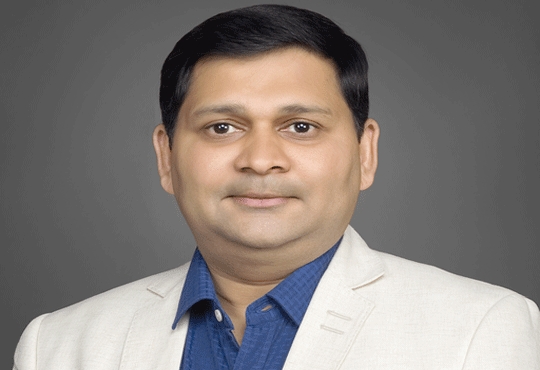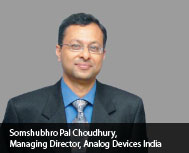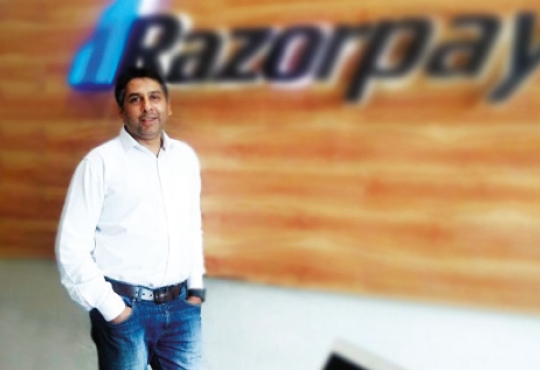
CIOTechOutlook >> Magazine >> July - 2014 issue
Electronic Manufacturing Needs a Humungous Budget Cut
By
 Analog Devices, Inc. (NASDAQ: ADI) is a semiconductor company providing analog bridge to the digital world which offers a range of ground-breaking products by investing 19 percent in R&D. Headquartered in Norwood, Massachusetts, the company has a current market cap of $17.05 billion.
Analog Devices, Inc. (NASDAQ: ADI) is a semiconductor company providing analog bridge to the digital world which offers a range of ground-breaking products by investing 19 percent in R&D. Headquartered in Norwood, Massachusetts, the company has a current market cap of $17.05 billion.India has a dubious classification of being the largest importer of defense equipments. Today with the policy decisions, the government is trying different ways like incentivizing to enable more technology transfers to be done out of India. However, without a big manufacturing push from the new budget, India would be in troubled waters. So, the electronics manufacturers are keeping their fingers crossed for a humongous budget cut.
As India has opened up the defense industry, they are now starting to partner with big MNCs and global enterprises. Hand-in-hand, the traditional IT houses have slowly matured into design houses over the last couple of years and deriving a significant portion of their revenue from product engineering services that delivers loads of design works for their international clients. Communication infrastructure is also evolving thanks to the MNCs doing design products.
Defense & Aerospace
Since size, weight and power are crucial in defense and aerospace industry, India aims to reduce the huge amounts of communication equipments being carried by the soldiers in battlefield; thereby enhancing their agility and ability to move rapidly. We are able to integrate a large part of communication signal chain into one chip. The challenge is to aid our customers to design lighter, smaller equipment whilst maintaining a high level of performance. The most crucial part security of communication is achieved by the idea of the agile communication, where the frequency of transmission changes extremely quickly in milliseconds; thus making the hacking extremely difficult. Likewise, to address their dire need of ultra high speed convertors, leveraging our technology and systems applications competence, this high speed conversion signal chain has been integrated into a single chip.
To capitalize on it, customers should build their robust products around the convertor block to obtain the maximum performance by integrating those into the communications, radar or electronic warfare system. Defense industry requires a long design cycle due to the involvement of factors like qualification. Therefore, we must ensure our customers' capability of utilizing our technology, since it is a big investment for us.
Global Trends Vs India
In defense electronics, many of these technologies are happening in tandem globally. Guesstimating from the direction, automation and the amount of electronics going into the electronic warfare system, there is no drastic divergence between global and Indian market. Though the market drivers of military and defense industry are quite similar across the globe, there are considerable regional differences in all the industries.
India is a unique market where high end equipments can always be sold. However, it is not lagging behind but reluctant to adapt technology. For instance, in the metering space there is a novel technology which incorporates isolation capability into a metering processing chip. Even the local companies who are aware of the cost, tampering & integration benefits are not willing or able to take the leap and make the required change in basic technology.
While UPS system is the head of the game, in automotive industry big investment is happening in terms of advanced driver assistance systems, where either radar based or camera based solutions work as a second pair of eyes and ears to the drivers. Customers' need for maximized flow space in cars is becoming a key driver. For which, we need to provide high level of integration into our components that facilitates more electronics in smaller spaces and more channels in smaller boxes. For instance, clever tricks like dynamic pack control that use smaller space and reduce heat, enable customers to deliver much smaller, high performance, lower power solutions. Medical electronics has also attracted the attention of big MNCs. However, consumer electronics is the area we have the least amount of business out of India, since consumers are all about volumes and mostly go for products manufactured by China.
On the other hand, India has stepped up in technology that ground up innovation. We have strong relationships with the MNC companies and large players in the market who tend to drive a lot of innovation in technology and investments in new products & solutions. At the same time, we also work with a lot of startup community members and listen to small emerging companies. They are quite often very agile and active in developing new emerging technologies which could become solid market trend for future. It enables us to jump ahead of the competition to be there with the technology in place with a real requirement as opposed to just having the capability. It will also help us in taking the right decisions and investment choices. Hence, we continuously look out for these startups in terms of advice, providing required specific technology and business connections via network. To encourage innovation, we continuously work closer with the universities where contests are conducted. The prize is given in the form of fellowships where senior ADI employees mentor and guide the students for one full year on a project basis.
CXO Insights
Preparing for the Next Unforeseen Disruption
By Inputs from Sushil Goyal, Co-founder & MD at Rahi System
SaaS - Empowering IT Economics Globally
By Vic Mankotia , VP - Solutions Strategy, Asia Pacific & Japan, CA Technologies
E- mandates and their Power to Transform...




